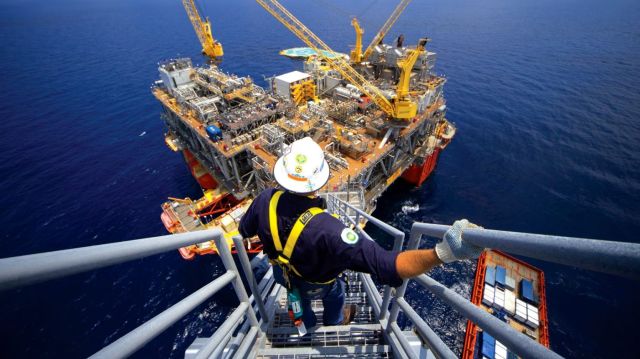
Between 2022 to 2025, BP plans to invest $7 billion in its Gulf of Mexico business. (Source: BP)
Advances in 20,000-psi technology are paving the way for BP’s expected production growth in the deepwater Gulf of Mexico (GoM) later this decade.
BP discovered the Kaskida reserves in 2006 but had to wait for technology capable of handling the higher pressures and higher temperatures of the reservoir to become available. Given the progress in development of 20K equipment, BP expects to reach final investment decision (FID) on the Kaskida development later this year, Andy Krieger, BP’s senior vice president for the GoM and Canada, said during a May 7 keynote at the 2024 Offshore Technology Conference in Houston.
“The Paleogene will lead our growth through the end of the decade with new hub developments,” he said.
In addition to Kaskida likely reaching FID this year, BP sees the possibility in 2025 to also sanction the Tiber development, he said.
BP has discovered 9 Bbbl of resource in place in the Paleogene across the Kaskida, Tiber, Gibson, Gila and Guadalupe discoveries. Together, they have the potential to deliver 150,000 bbl/d in the early part of the next decade.
“That's 9 billion barrels of discovered resource in place that's already been penetrated that doesn't require exploration,” Krieger said.
All those barrels needed tech advances.
The industry has continued to develop the technology needed to develop 20K fields that is now “commercially available, really, across the spectrum of drilling, completions and facilities and topsides,” he said. “In my career, I remember at one point we were dealing with 5,000 [psi] equipment, and we made the breakthrough to 10,000 [psi] equipment, and it wasn't that long after that that 15K equipment was cutting edge as we started to begin to develop our Thunder Horse facility. And now the industry is sitting at 20K.”
He said one of the things that has fundamentally transformed the Paleogene is completion technology, with the introduction and extensive use of multi-stage fracking to access the reservoirs.
Kaskida has “one of the thickest gross height intervals across the Paleogene, at least what we've seen to date,” Krieger said. “What that requires is use of a multi-zone fracking tool, a tool that's actually been used literally over hundreds of times within the Gulf of Mexico today.”
That’s proven technology, he said, while fracking individual stages in deep water with 700,000 lb/d or more of proppant is more recent.
“It's certainly not been the completion type that has underpinned the Gulf of Mexico production for the last two to three decades. But it has been successfully deployed many, many, many times,” he said.

Design one, build many
BP and others are pursuing a “design one and build many philosophy” to bring more efficiency into the historically lengthy, complex and costly construction of topsides for floating production units.
“I think … the days of the very large and bespoke production facilities of the past are probably just that,” Krieger said.
From BP’s perspective, the GoM will deploy smaller facilities capable of handling 80,000 bbl/d to 100,000 bbl/d.
“They're simpler facilities. They're simpler to construct. They're simpler to commission. They're simpler to operate, and they require fewer people to be offshore,” he said.
When BP developed Thunder Horse as the 15K operating environment was evolving, they had “a lot of serial number zero-zero-ones because the equipment just didn't exist,” he said. “What we've seen in this case, we've taken a somewhat more patient posture as it's related to the Paleogene. And those solutions have come through, developed by our drilling contractors, developed by our service providers and now successfully employed by other operators that have gone before us.”
Recommended Reading
Comments
Add new comment
This conversation is moderated according to Hart Energy community rules. Please read the rules before joining the discussion. If you’re experiencing any technical problems, please contact our customer care team.

